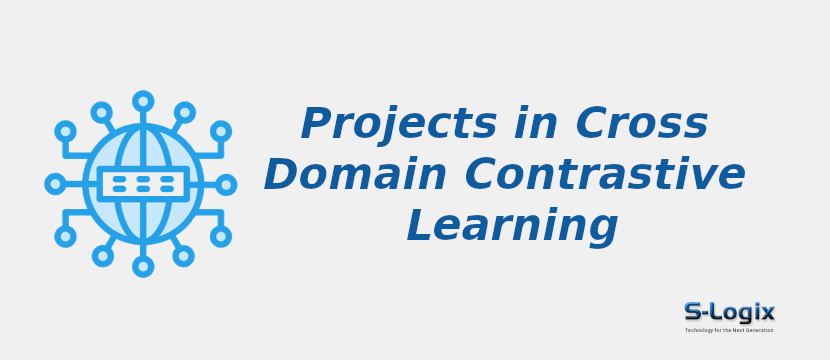Project Background:
The project background in cross-domain contrastive learning stems from the need to effectively leverage unlabeled data across different domains to improve the performance of machine learning models. Traditional supervised learning approaches often rely on labeled data within a single domain, which may be limited or costly to acquire. Contrastive learning offers a promising alternative by training models to distinguish between positive and negative sample pairs, even without explicit labels. However, applying contrastive learning directly to different domains presents challenges due to domain shift, where the underlying data distributions vary between domains. Cross-domain contrastive learning aims to address this challenge by learning representations invariant or robust to domain differences, enabling models to generalize across domains effectively. Leveraging unlabeled data from multiple domains and encouraging the model to learn domain-invariant features. This approach has wide-ranging applications with potential benefits across various fields, such as computer vision, natural language processing, and healthcare.
Problem Statement in Cross-Domain Contrastive Learning
- Traditional contrastive learning struggles with domain shift distributions, leading to degraded performance when applied across domains.
- Availability of labeled data within a single domain is often scarce or expensive, hindering the effectiveness of supervised learning approaches.
- Need for methods can learn representations invariant to domain differences, enabling models to generalize effectively across multiple domains.
- Current approaches may lack the ability to learn representations that transfer well between different domains, limiting their applicability in real-world scenarios.
- Leveraging unlabeled data from multiple domains poses a challenge in contrastive learning, as it requires models to learn meaningful representations without explicit supervision.
Aim and Objectives
- Using contrastive learning techniques to develop effective methods for learning transferable representations across multiple domains.
- Develop algorithms to learn representations invariant to domain shifts, enabling models to generalize across diverse domains.
- Utilize unlabeled data from multiple domains to enhance the robustness and generalization ability of contrastive learning models.
- Investigate techniques for aligning feature spaces between different domains to improve the transferability of learned representations.
- Explore methods for adapting contrastive learning objectives to handle domain-specific characteristics and variations.
- Validate the effectiveness of the developed approaches through comprehensive experiments and benchmarks across various domains and tasks.
Contributions to Cross-Domain Contrastive Learning
- Developed methods to learn representations are invariant to domain shifts, enabling models to generalize effectively across diverse domains.
- Explored techniques to leverage unlabeled data from multiple domains, enhancing the robustness and transferability of learned representations.
- Investigated approaches for aligning feature spaces between different domains, facilitating improved transferability of representations.
- Explored methods to adapt contrastive learning objectives to handle domain-specific variations, enhancing model performance across domains.
- Validated the effectiveness through comprehensive experiments across various domains and tasks, demonstrating utility and applicability in real-world scenarios.
Deep Learning Algorithms for Cross-Domain Contrastive Learning
- Contrastive Predictive Coding (CPC)
-
SimCLR (SimCLRv1 and SimCLRv2)
-
MoCo (Momentum Contrast)
-
SwAV (Swapping Assignments between Views)
-
BYOL (Bootstrap Your Own Latent)
-
Barlow Twins
-
DINO (Emerging Properties in Self-Supervised Vision Transformers)
-
PIRL (Self-Supervised Learning of Pretext-Invariant Representations)
-
InfoMin (Information Maximizing Self-Supervised Learning)
-
AMDIM (Adversarial Momentum Contrast for Unsupervised Visual
- Representation Learning)
Datasets for Cross-Domain Contrastive Learning
- ImageNet
-
CIFAR-10
-
CIFAR-100
-
STL-10
-
DomainNet
-
Office-31
-
Office-Home
-
VisDA
-
PACS (Photographic Affect and Culture Emotion Stimuli)
-
VLCS (Visual Learning across Clothing and Soft Fashion Accessories)
Software Tools and Technologies
Operating System: Ubuntu 18.04 LTS 64bit / Windows 10
Development Tools: Anaconda3, Spyder 5.0, Jupyter Notebook
Language Version: Python 3.9
Python Libraries:
1.Python ML Libraries:
- Scikit-Learn
- Numpy
- Pandas
- Matplotlib
- Seaborn
- Docker
- MLflow
2.Deep Learning Frameworks:
- Keras
- TensorFlow
- PyTorch
